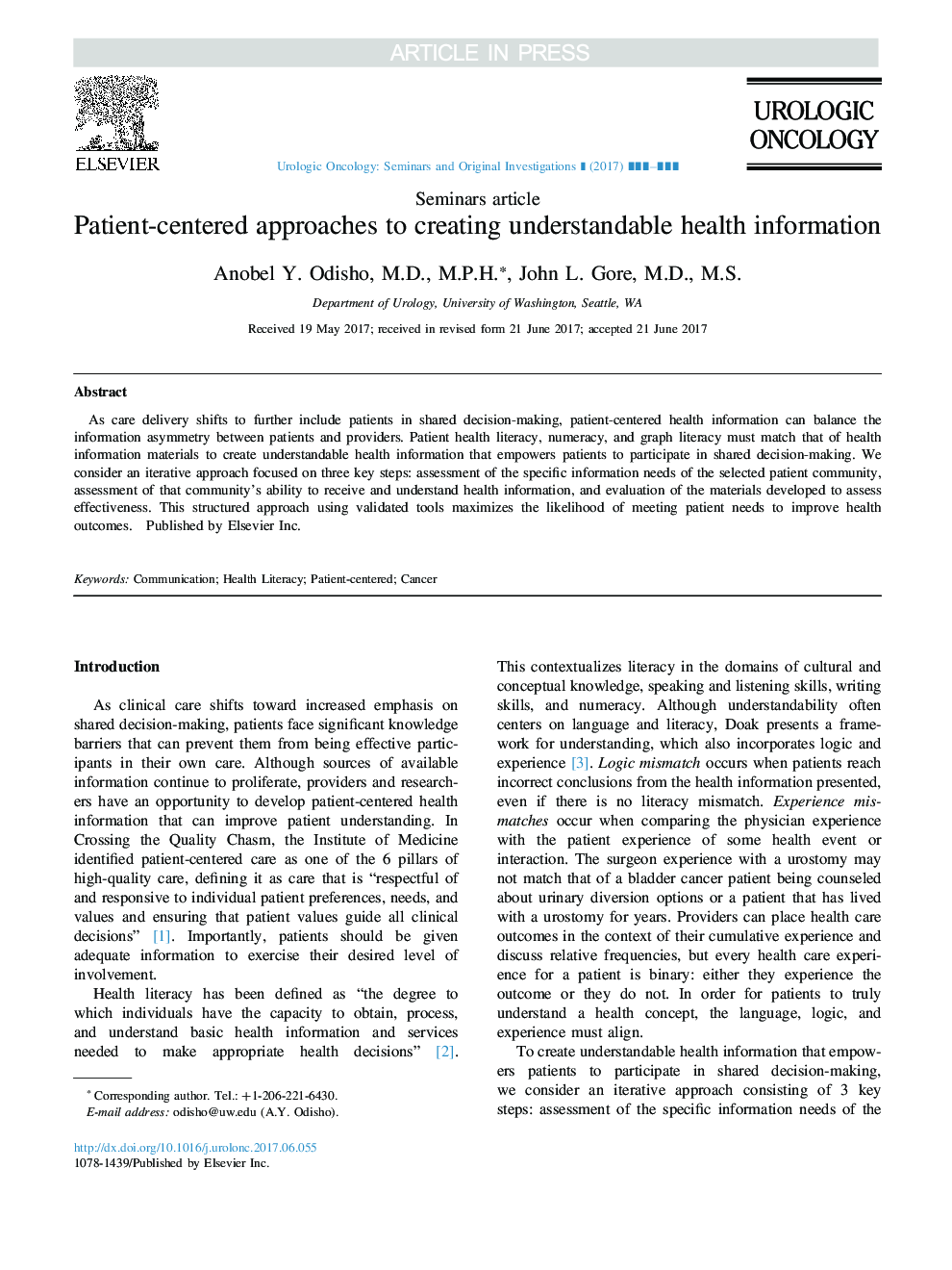| Article ID | Journal | Published Year | Pages | File Type |
|---|---|---|---|---|
| 8790398 | Urologic Oncology: Seminars and Original Investigations | 2017 | 5 Pages |
Abstract
As care delivery shifts to further include patients in shared decision-making, patient-centered health information can balance the information asymmetry between patients and providers. Patient health literacy, numeracy, and graph literacy must match that of health information materials to create understandable health information that empowers patients to participate in shared decision-making. We consider an iterative approach focused on three key steps: assessment of the specific information needs of the selected patient community, assessment of that community's ability to receive and understand health information, and evaluation of the materials developed to assess effectiveness. This structured approach using validated tools maximizes the likelihood of meeting patient needs to improve health outcomes.
Related Topics
Health Sciences
Medicine and Dentistry
Oncology
Authors
Anobel Y. M.D., M.P.H., John L. M.D., M.S.,
